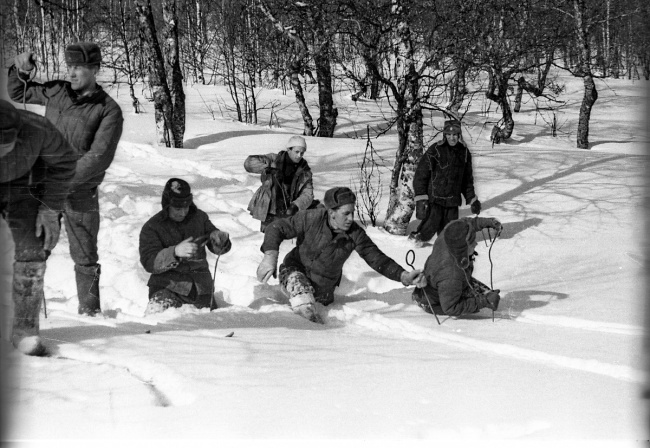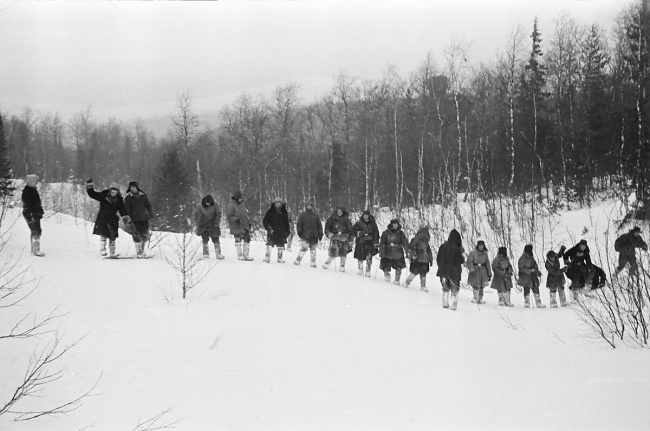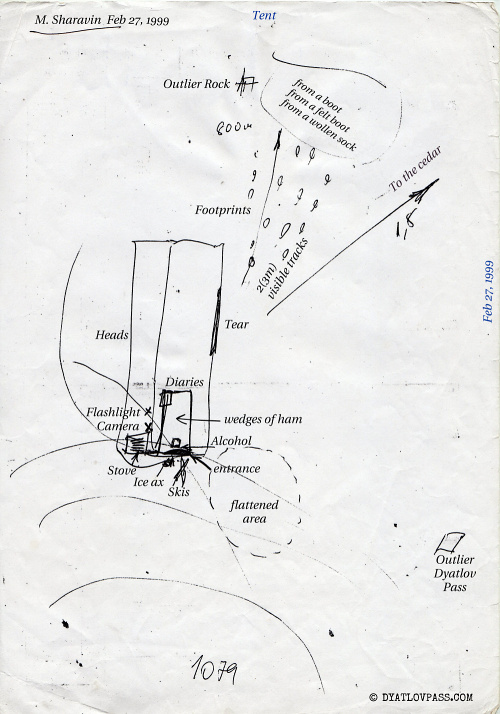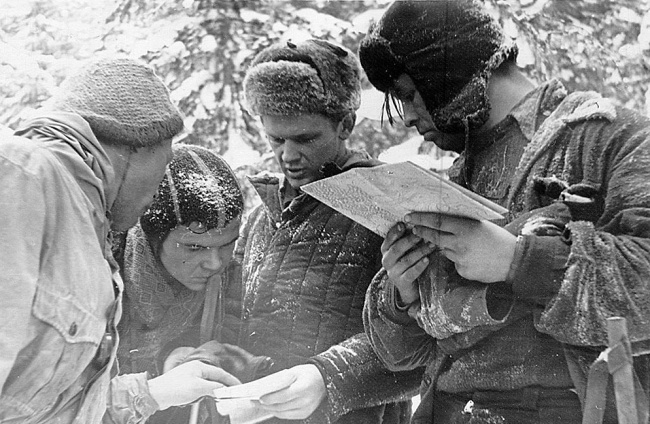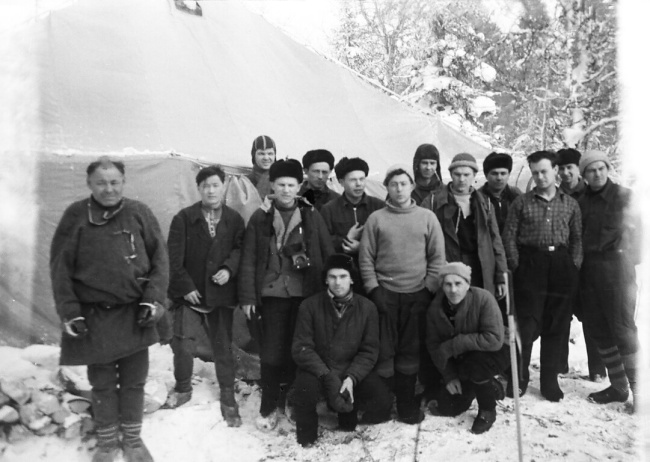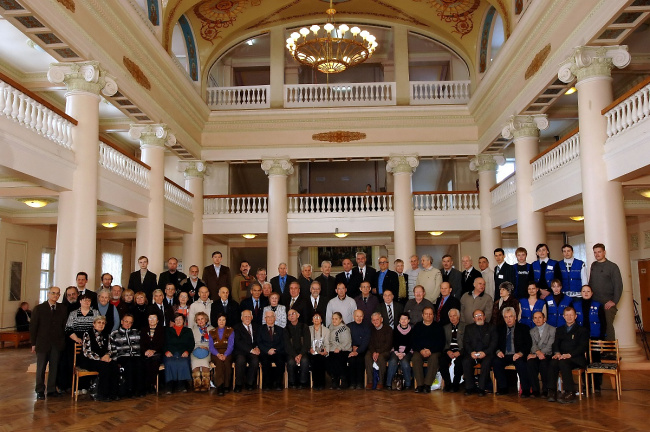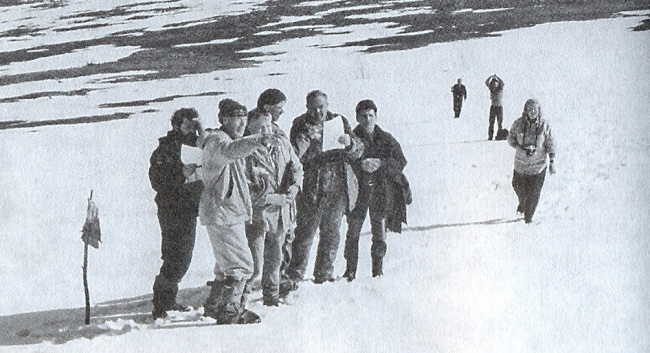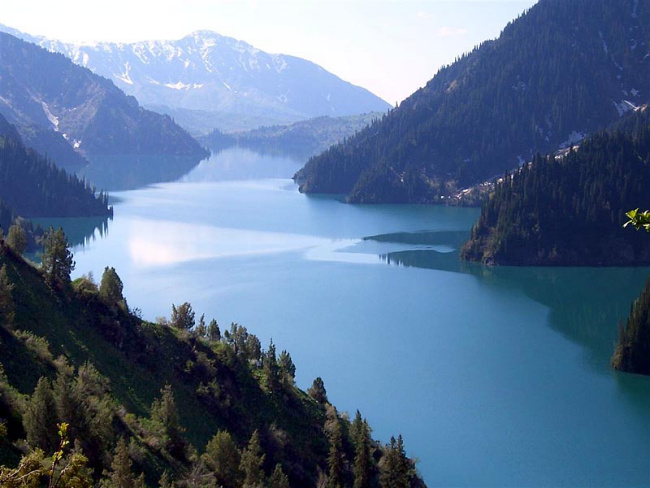
Interview with Mihail Petrovich Sharavin
На перевале с группами Слобцова 23.02-4.03 и Мартюшева 6-17.04.
© Maria Piskareva July 3, 2012
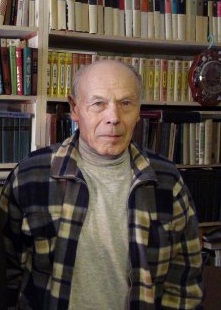
Mihail Sharavin when the interview was taken July, 2012
MP: Dear Mihail Petrovich! My name is Maya Leonidovna Piskareva, I myself am from St. Petersburg, but I have been living in Spain for 11 years. Somewhere a year and a half ago, by chance, while reading the book by D. Bykov "Decommissioned", I learned about the tragedy in the Urals that happened to a group of UPI students led by Igor Dyatlov. This shocked me so much that I began to deal with this tragedy all my free time. All thoughts and thoughts about it. I began by studying all the documents published on the Internet, then I started having my own thoughts and conclusions. I began to look for people who, at least somehow, indirectly, were involved in that tragedy. I was lucky - thanks to the Internet and many days of work, I met many interesting people, researchers and residents of Vizhay, Ivdel, and Sverdovsk, who knew people whose names appeared in the case files. I found out some unofficial information that was not included in the protocols of the criminal case. I met many new researchers who join the ranks of those obsessed with this topic every year.
I would be very grateful if you answer some questions, some of these questions are personally from me, and the other part of the questions - they were giver to me by researchers unknown to you, there are not many of us, we do not shine at conferences, we are from different countries and corners of Russia, but we try to contribute, each to the best of his strength and capabilities. Our site is called Khibina - files and is located here: https://sites.google.com/site/hibinafiles/home
Materials are posted in the public domain, and have this status initially, or posted by agreement with the authors.
Judging by your interviews, you are a straightforward, sociable person. Therefore, I dared to contact you with questions, and I very much look forward to the answers, and not just me, but also many people on whose behalf I speak with you today.
– 2 –
MP: In an interview with representatives of the Dyatlov Foundation - in May 2007, V. Brusnitsyn mentioned that you were transported to Otorten in two groups "i.e. our group was divided into two and dropped off here".
Kruglov and Kutsevich asked: "Did you gather to spend the night here?" Brusnitsyn replied to this: "We spent the night here." In a conversation with Kruglov and Kuntsevich on Feb 15, 2007 you also said that "we were transported in two flights, first one group, then the second." Please, tell me, did you wait for the second group or did you go in the morning without the second group to the Lozva valley?
MSh: Yes, we were dropped off on Mt Otorten with two helicopter flights. I was on the second flight. We reunited without difficulty, since we landed at the landing site of the first part of the group in the area of one of the heights of the eastern spur of Mt. Otorten on the evening of Feb 23. Koptelov was in our group. We did not ascent to Mt. Otorten, but went down into the valley of Lozva river and spent the night.
MP: You mentioned that Yuri Koptelov was with you in Slobtsov's group. He also ended up with you on Otorten?
MSh: Koptelov was in our group.
MP: When did Slobtsov's group receive the first canister from the plane? Date and time of day? Was it Maslennikov's note, Ortyukov's plan, or something else?
MSh: We received Maslennikov's note in a canister on Feb 24, from 12:00 to 14:00. We were instructed to go to the valley of the Auspiya river, because earlier, in the lower reaches of the Auspiya, the Mansi found one of the overnight stays of the Dyatlov group.
MP: You said that you went up to the tent with Boris Slobtsov. Was there anyone else with you at the tent, or were there only two of you at the time of its discovery?
MSh: Slobtsov and I found the tent while our guide Ivan Pashin at that time was at the outlier rock on the pass where now the memorial plaque is mounted.
MP: Where were Vadim Brusnitsyn and Aleksey Cheglakov at that moment?
MSh: Brusnitsyn and Cheglakov were with the main group.
MP: Boris Slobtsov said in his testimony that you first saw the tent through binoculars. Which binoculars did you use? Who gave it to you, when and to whom did you return it?
MSh: I don't remember any binoculars. We saw the tent with Slobtsov when we were moving from the outlier rock towards the northern spur of height 1079.
MP: Was the alcohol flask you brought from the tent full? Who carried it, this flask, who poured the alcohol, and who exactly drank the alcohol? How many people? How much alcohol did you personally drink, do you remember?
MSh: The soldier's flask of alcohol was almost full. We drank the flask with the whole group in the evening at supper. Personally, I drank about 60 grams.
MP: Mihail Petrovich, this flask of alcohol that you and Slobtsov took from the Dyatlov group's tent, then returned it to the tent? Prosecutor Tempalov described an already empty flask with the smell of alcohol or vodka. What else did you say to return to the tent from what your group brought to the camp?
MSh: I do not remember what we returned it back to the tent. I was then in a state that is defined as HERE AND NOW and did not think about history at all. I didn’t have any problems with my memory. Forgetfulness appeared much later.
MP: Have you seen the second fire in the stream, which Yudin talks about, with sawed and chopped wood?
MSh: I have not seen the second fire.
MP: Do you remember investigator Korotaev in the first days of the search? Was his name mentioned back then? Which of the investigators did you remember in the first days of the discovery of the tent, the bodies of Doroshenko and Krivonischenko at the cedar, the bodies of Igor and Zina? Or was there no investigator Korotaev, and only Prosecutor Tempalov?
MSh: I remember investigator Korotaev when the tent was being dismantled on the 28th.
MP: What are your personal impressions of the investigator? What did he say, do you remember?
MSh: He did not make any assumptions about the causes of the tragedy with the hikers, he promised to tell us, the search participants, about the causes of the tragedy at the end of the investigation.
MP: Tell me, please, the name of the newspaper of the Dyatlov group - "combat leaflets" did not surprise you? Was it customary among students - hikers in your time to issue propaganda leaflets about some event in the expedition? Have such leaflets been issued in other hikes?
MSh: I don't remember anything about the combat leaflets. In my practice, There hasn't been anything like this in my practice.
MP: Were you and your generation of students drafted into the army?
MSh: We were exempted from serving in the army, because we underwent military training at the military department at the institute.
– 3 –
MP: About the cedar. Remember, please, when did you first see that notorious window in the cedar branches?
MSh: I have not seen a "window" in the crown of the cedar, but I heard about it from the other searchers.
MP: About the stove. How much firewood was there in the stove? Were they split, or were they whole logs? Were the pipes of the stove nearby, or was the stove already assembled with pipes, and the pipe coming out of the tent?
Was the stove fixed with carabiners to the top of the tent, or was it just lying in the tent?
MSh: The stove in the tent was in a stowed position with several logs of firewood stacked. The group did not try to install the stove - they were preparing for a cold night.
MP: Were you present when Rustem Slobodin's body was found? Do you remember who drew up the protocol of the inspection of the scene? What do you personally remember at the place where the body was found? Do you remember any details? Who else from the search engine students was present at the discovery of Rustem's body?
MSh: I was not present at the discovery of other bodies, except for those found at the cedar of Doroshenko and Krivonischenko.
MP: How many dog handlers were there with dogs on the slope? How many dogs do you remember? Did the dog handlers stay the whole time, until May when the bodies were found in the ravine? Do you remember the surnames or names of dog handlers or their faces?
MSh: I don’t remember how many dogs there were and I didn’t communicate with the dog handlers.
MP: Have you tried to get to the cedar from the place of the found tent without skis?
MSh: I did not go to the cedar without skis.
MP: You said in an interview with Navig that when you came back from the found tent, "we... left behind the so-called guide, fireman, at the top and rushed down, it was already dark and flew back this distance in an instant...
KA (Navig): This from the tent?
MSh: Yes. When we were going back to our friends..."
Pashin and Cheglakov then approached the tent? Joined you? When was this? On the first approach to the tent, when it was discovered, or on another day?
MSh: Neither Pashin nor Cheglakov could be near the tent on the 26th. Pashin descended to the search camp with us and only at the end of the way fell behind. They could have been at the tent only on the 27th in the afternoon.
MP: In the photo where the searchers are looking for bodies, it can be seen thay fell into the snow up to their waist. Where could this be, in what place, approximately at what distance from the cedar?
And where could this be, approximately at what distance from the cedar, it is clear that the searchers are without skis, and the crust is holding tight:
MSh: It was possible to fall into the snow up to the waist in the area of the stream on the way to the cedar.
– 4 –
MP: In this photo, can you identify any of the guys in Blinov's group? Is Yuri Blinov himself here?

Vizhay Jan 25, 1959. Farewell to Blinov's group
MSh: I find it difficult to answer.
MP: Do you keep any records, personal notes about that tragedy, did you keep records then, a diary of the Dyatlov group search? Are you going to publish them?
MSh: I did not keep diaries during the search, which I regret.
MP: When a hiking group planned for a cold overnight in winter, did that mean that the group would spend the night without a stove? Have you had the experience of spending the night without a stove in winter conditions? How did you insulate yourself and, in general, how did the hikers insulate themselves, undress, change their clothes? Did you sleep without shoes, without boots? Only covered with blankets or sleeping bags? I am interested in all the details, in what clothes and shoes did the hikers go to sleep on a cold night?
MSh: I had to sleep in a tent without a stove in the winter, and this was considered a cold overnight.
MP: Do you personally think that Igor Dyatlov could spend the night without a stove, having a stove and firewood nearby? Why had they already undressed, got ready for bed and had no shoes, and the stove was not yet heated, is this because it was not cold enough you think?
MSh: Dyatlov deliberately went on a cold night.
MP: That labaz that was found near the search camp did not cause any surprise in you? That it was not a labaz, but a hole dug in the snow? Have you seen it personally? Have you seen how the products from the labaz were brought to the camp? What container were they in? How do you think it is possible to store sugar, salt, cocoa powder in the snow without plastic bags? How did student groups make a labaz in the taiga in winter at that time? Hanging high in the trees, or digging holes in the snow for the food supplies? What was usually left in the labaz? Did they leave documents and money?
MSh: I have not seen the labaz of the Dyatlov group.
MP: In the case files is once mentioned a chum that was on the slope, do you remember it? Have you seen it? Was it really a real big chum or some kind of mark? Can you describe its appearance, what was it made of? There is a photograph of a certain Mansi chum. Have you seen such a sign in the vicinity of the search?
MSh: I remember where the chum was indicated on the search chart. It is possible that the photo of the remains of the chum in the form of poles was taken at the place where it appears according to the scheme.
MP: You are talking about the intense stress that began in you, as well as in Slobtsov and Brusnitsyn after the discovery of the tent. There are people who believe that the cause of stress could be the "sighting" of a body in the tent or near the tent, about which the members of the Slobtsov group were forbidden to speak. What is your comment on this?
MSh: There were no bodies in the tent. It was empty.
MP: Have you signed a nondisclosure?
MSh: I haven't signed a nondisclosure.
MP: Yuri Efimovich Yudin said that at the institute through the trade union committee there was going to be dirt on the Dyatlov group, as if they were traitors to their homeland and wanted to abscond. He says there were many students involved in this gathering. Have you heard about this "event"?
MSh: I have never heard before about compromising evidence on Dyatlov group. I will ask Yudin if I have the chance.
MP: They also say that as early as Feb 19-20 there were rumors circulating through the UPI that the group had died. Have you heard of this? Or when you went in search of the group, you were hoping that the guys were alive?
MSh: Yes, when we went in search, we hoped that the Dyatlov group was all alive.
– 5 –
MP: When you drank alcohol on the evening of February 26, did you think the guys were already dead? Or did you toast to a good outcome of the search?
MSh: On February 26, subconsciously, everyone was probably thinking that we would not find them alive.
MP: Evgeniy Vadimovich Buyanov writes that Slobtsov's search group comprised of nine students, and two guides assigned to the group. It was eleven in total. How did you all spend the night on Otorten? Did you have tents? How many tents were there? Was there a stove or stoves? This is an important everyday detail.
MSh: Yes, there were nine students and two guides in the search party. We all spent the night in one double tent, in which a stove was suspended from a rope. The tent was equipped in the same way as the tent of the Dyatlov group.
MP: Why do you think only the Slobtsov group was given guides? Couldn't you do without them? Where and how did they "guide" the group?
MSh: As it turned out, the guides had been there before and knew the area. This is true in relation to Pashin. In particular, he told Slobtsov and me about a lake near Otorten, where snow falls from a steep slope are possible. Therefore, we moved towards the northern spur of height 1079 - in the direction of the proposed lake. This is when I noticed the corner of the tent sticking out of the snow.
MP: Ivan Pashin is a local forester. Did you notice what kind of skis he had? Hunting? And what about Cheglakov? Were these skis different from yours, the student's?
MSh: Pashin and Cheglakov had hunting skis.
MP: You said that you had a suspicion that "one of these guys" who were given to you "with the pretense to be guides, clearly did not act as a guide". Who exactly did you had in mind? was he younger or older? You mentioned that one of them always walked with a camera around his neck, which of them, young or older, had the camera?
MSh: I meant Cheglakov, who had a camera on his belt.
MP: You said that the young one was like a guide, and the older one was a firefighter? I don't understand this. How old were they, one and the other?
MSh: Cheglakov, i.e. fireman, was younger.
MP: Mikhail Petrovich, let's return to the tent. Have you noticed what skis (one pair) were or were lying near the tent? Were they tied together? Were they narrow or wide? What mounts did they have?
MSh: I remember that when we approached the tent, we saw a free pair of skis with soft bindings. I can't say anything about this in more detail. With skis, there is a lot that is unclear, since, according to Yudin, one pair of skis turned out to be a spare.
MP: They say that two tourniquets were found in the tent. Could you clarify what these bandages were?
MSh: I don’t remember about the tourniquets.
MP: A sealed can of film that allegedly rolled out of the tent. What was it like? Was it round and flat, like a washer? Or another kind? And what was its diameter approximately?
MSh: I have not seen the can in which the film was found. At that time, hikers often used film in cameras for photographing.
MP: They say that scraps of film were found 15 meters below the tent. Yudin suggests that they could have taken pictures there.
MSh: I also heard that from Yudin.
MP: Mihail Petrovich, do you know the name of the Prosecutor Tempalov, who, they say, also took part in the search? Did you meet with him?
MSh: I met with Tempalov only once - on the 28th during the dismantling of the tent. I can't say anything about him.
MP: On what date did you personally leave the search? From the Slobtsov group who else flew home with you? On Feb 23, 9 people flew to Otorten: you, Slobtsov, Brusnitsyn, Koptelov, Lebedev. And they say little about the other four, only you mentioned the names of Krotov and Halizov, and the other two people? Do you remember their last names? When did they all leave the search? Didn't you all come back together?
MSh: In addition to the listed comrades, the group included Stas Devyatov and Vladimir Strelnikov. We all left the search on March 4th, most likely on more than one flight. Then we all returned to Sverdlovsk by train.
MP: There are many speculations why were you not interrogated by the prosecutor's office. They questioned Lebedev, who did not take part in the discovery of the tent; they questioned Brusnitsyn, but they did not questioned you. Why was Lebedev questioned? How did he suddenly turn out to be of more interest than you? Moreover, he did not participate in the discovery of the tent. I am at loss - you found the tent, you found the bodies by the cedar, but they questioned Atmanaki, Akselrod, Lebedev, and Brusnitsyn. You could have had much better information for the investigation. Or was the investigation guided by some of its own principle of interrogation? What is your opinion?
MSh: I was not questioned because during these interrogations I was in the hospital with a concussion. I got this concussion on my next search trip in April.
– 6 –
MP: When you were on the slope, did you notice any holes and craters there? Journalist Grigoriev wrote about icy craters and pits, what kind of pits are these, could you explain?
MSh: I myself have not seen the pits, because I didn’t have to go further west of the tent.
MP: I still do not understand the following: your group found a ski track of the Dyatlov grpup near Auspiya, on the left bank, and the next day, February 26, Slobtsov, you and Pashin went along this track and went to the pass. It turns out that you kind of walked back along the Dyatlov track and moved away from the slope? I understood that you were walking along the track, along which the Dyatlov group descended to Auspiya on January 31, when they could not cross the pass due to the strong wind. And you came along it to the place from where they went down for the penultimate overnight stay? And did your group spend the night there too?
MSh: On the 26th we went along the ski track of the Dyatlov group in the direction of the pass with a gradual ascent, soon we lost the ski track because we came to a solid crust. The Dyatlov group descended on the 31st not along their old ski track, but along a new one - they moved up the Auspiya river to the place where they later made a labaz, i.e. to the place where they spent the night. We camped much further, about 1.5-2 km downstream.
MP: As I understood from the case files, namely from the Resolution to close the case, the Dyatlov group, after spending the night on Auspiya, made a labaz and went to the pass, but came out on the slope of Kholat Syakhl. Here is what is written in the Resolution to close the case: "Later, on the ski trail, which was preserved at the time of the search, it was possible to establish that the hikers, moving to the valley of the fourth tributary of the Lozva River, were 500-600 m to the left and instead of the pass formed by the peaks 1079 and 880 they went up on the eastern slope of height 1079." It turns out that your group calmly went back down the ski track from the place of the overnight stay and went back to the pass? I.e. there was no branch from the ski track to the left of 500-600 m? And the ski track again led to the pass.
MSh: It is possible that on the 31st, the Dyatlov group climbed the pass in the place where it is shown on the map. The next day, they ascended deliberately to the left of the pass, follwoing the shortest route in the direction of Otorten, trying to move on solid snow.
MP: How far from this place, where your group came, was it to the tent?
MSh: It was about 3 km from the place of our overnight stay to the tent.
MP: I am unclear about one point in your answer about the location of your overnight stay and the labaz. You said that the Dyatlov group "moved up the Auspiya river to the place where they later made a labaz, i.e. to the place where they spent the night. We camped much further, about 1.5-2 km downstream." Was it just your group's overnight stay, or was the search camp set up on the site of this overnight stay? The first one, before the camp was moved closer to the cedar, to the upper reaches of the Lozva? Another point: is the exact location of your search camp on Auspiya known? I.e. have modern researchers found it, or are they just guessing where it could be? Have you been there in our time at the site of this camp?
MSh: The searchers' camp, set up on the 27th, was located 500 m from the outliers rock on the pass in the direction of Auspiya river. All helicopter landings were carried out at the outlier rock. The labaz was discovered upstream of the Auspiya at a distance of 400 m from the camp. And our overnight stay on the 25th and 26th was downstream of the river. Auspiya is about 2 km. Plot these distances on a map of the headwaters of the Auspiya river and everything will clear up. By the way about the camp. I did not have to go there later because of the limited time spent on the pass, but the participants of the Kuntsevich expeditions in 2011 found its location.
MP: The researcher under the nickname s777 wanted me to ask you the following question: "According to M.P. Sharavin, why did Brusnitsyn and part of the search group decide to move down the track found (that is, back to the beginning of the Dyatlov route)? Why did they look for the continuation of the ski trail up - it is clear, but why did they go down, and even so far, as much as 5 km to the campsite?"
MSh: The question about Brusnitsyn is the easiest to answer. The fact is that it was February 26th. And on the 25th, towards evening, we, i.e. Slobtsov's group went on the Dyatlov ski track and decided to organize a circular search for the day after. Slobtsov and I had to go in the direction of the further route of the Dyatlov group, and Brusnitsyn in the opposite direction, up to their closest overnight stay. I went up to the pass most likely because I had some experience in pathfinding. And why Brusnitsyn went to the second search group, I do not know for sure. So Slobtsov said so.
MP: Mihail Petrovich, I wonder why it was necessary to go back along the route of the Dyatlov group, if it is known that Dyatlov went in the opposite direction, to Kholat Syakhl? Did you have such an instruction? When did you receive it? Or is it a search practice? Or was there a task specifically to search and find the overnight stay?
MSh: Why did we go down the Auspiya along the Dyatlov track? When on the 25th we found the ski track, we could only assume that this track was left by the hikers. There was no sign of the ski poles. For a convincing identification of the ski track, it was necessary to find their overnight stay. Going up the slope, we were not sure that we were following the hikers' track, we only hoped that this is so.
MP: Mihail Petrovich, please see this diagram. It seems to me that this is a synopsis of your story. Nobody, except you, called the loin boiled pork in the protocols and memoirs. True, I have not read Matveeva yet, maybe she has something. Moreover, on the side is written with woman's handwriting "Dyatlov Pass". Do you know who the author of this drawing is?
MSh: I studied all the fragments of this diagram, the arrangement of objects in the tent, and so on. Yes, this is my scheme - most likely drawn by me for Matveeva in 1998, when she was at my house with Yuri Yudin. It was the 40th anniversary of the tragedy. Do you understand all the words on the diagram? Note
In addition, there is a note on the diagram. On it, the distance to the "outlier rock" is 800 m. Today I re-read Maslennikov's testimony, where he estimates this distance as
MP: Mihail Petrovich, I am selecting photos for the layout of your interview, and I noticed that there are very few photos of you on the search. I wanted to use this photo, but I was told that you were not on it.
Although I relied on the information of Evgeniy Vadimovich Buyanov and Boris Efimovich Slobtsov, who said that from left to right are: Sharavin, Strelnikov, Slobtsov, Halizov. But my friend, the s777 researcher, said that recently Vladimir Aleksandrovich Lebedev personally clarified (in a telephone conversation) that in the photograph it is not Strelnikov, but himself - Lebedev. And the clothing of the left-most searcher is very similar to Brusnitsyn. The argument is that in all photos Brusnitsyn has the same hat, and you are always in dark earflaps. Can you please take a look, are you in the photo first on the left, or is it Vadim Brusnitsyn?
MSh: Maya, it is hard for me to tell right now. There is another similar photo, where I am looking at the map and am on the left in the picture. This hat is not mine. On the right in the photo is Halizov. I promise to deal with the photographs. It is a pity that the photographs from my personal archive are not digitized.
Here is a photo with me in it. (Note: Mihail Sharavin stands in the middle of the group. Sixth from the left, next to Moisey Akselrod)
– 8 –
MP: Mihail Petrovich, do you remember captain Aleksey Chernyshev on the search, from Ivdellag, with his group? He is marked in this photo by someone as the fourth from the right. Is it him, Chernyshev?
MSh: Here is a photo from Buyanov's book. On one of them Chernyshev is the second from the right. This is definitely the same face as in the photo you are asking about.
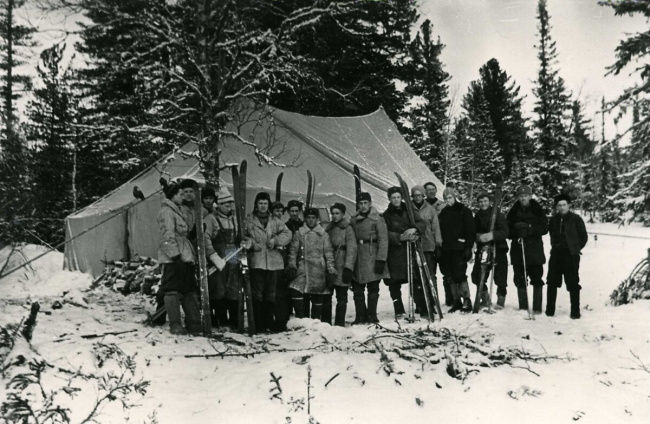
Searchers at the army tent. Captain Chernyshev - second from the right
And this is a big photo taken in UPI in 2009 on the fiftieth anniversary of the death of the Dyatlov group. Mihail Petrovich sits in the center, ninth from the right. Next to Boris Slobtsov.
MP: Do you remember when the soldiers, the investigator, the authorities came and began to camp, put up tents? Yuri Koptelov writes that it all started on February 27 in the evening, after you and him found the bodies by the cedar.
MSh: I did not participate in setting up the camp on the 27th. I know that Yuri Koptelov was doing this at Maslennikov's orders. After lunch, Maslennikov was already at the pass and supervised the search work. Oddly enough, I don't remember what I was doing this afternoon.
MP: You mention that you talked to the guys who found the flooring and bodies of the last four. I am interested in what kind of coniferous were there, what color, and whether there were coniferous at all. The photo shows that these are some kind of pine tree twigs. Did you ask them anything about the flooring?
MSh: Mohov, one of the participants in the search, could have seen the flooring. But now he cannot remember any details. Discussing the photo of the flooring with Yudin, we expressed doubt that the pine trees from the flooring could have been cut with a knife. No one noticed any red pieces of pine needles on the flooring. Investigator Ivanov mentioned the reddish discoloration of the needles.
MP: Mihail Petrovich, could you tell us briefly about your career after the institute? They say you defended your dissertation. It's true? What topic?
MSh: After graduation, I first worked as a foreman in a press-forging shop, then in a research laboratory at NIITYAZHMASH URALMASHZAVOD.
In 1975. defended his Ph.D. thesis on research of cold rolling mills.
– 9 –
MP: Dear Mihail Petrovich! I would like you to tell us a little about yourself. About your travel experience. That winter of 1959. You led a group in the South Urals. Please tell us what the route was? Who was in your group? Were there any extreme challanges on that trip?
MSh: I led a hike in the South Urals along the route Bakal - Iremel 1200 m - Yuryuzan settlement - Yaman-Tau town 1600 m - Dvoynishi station. There were no incidents during the hike, except that Pechenkin broke his skis on the Yaman-tau mountain, when we had a day off and he skied down from the top of the mountain. When we exited at the railway Beloretsk - st. Dvoynishi, we ran along the train, climbed up onto the open platforms and arrived safely singing songs to station Dvoynishi.
MP: Bashkiria, the Southern Urals, Beloretsk are the birthplace of my dad, our relatives still live there. I was born near Ufa although my parents soon left Bashkiria for Uzbekistan.
Please tell us more about that trip.
MSh: The hike took place during the winter holidays of the 4th year at the UPI named after S.M. Kirov. The group consisted of student hikers:
- Valeriy Petrovich Pechenkin - Faculty of Metallurgy, specialty in metallurgy of precious metals
- Natasha Skoreva - Faculty of Metallurgy
- Tatyana Andreeva - Faculty of Metallurgy, specialty building materials
- Rita Zubareva - Faculty of Metallurgy, specialty building materials
- Vera Kotova - Faculty of Metallurgy
- Lyuda Strelnikova
- Galya Radosteva - Faculty of Radio Engineering
- Misha Sharavin - Faculty of Metallurgy, specialty rolling production
- Gena Kosnarev
- Emma Barusevich - Faculty of Chemistry
- Tanya Suhova
- Lev Churakov - Faculty of Mechanics
The route of the group began in Bakal and went through Mt Iremel 1200 m, Bakty ridge to Yuryuzan village, Mt. Yaman-Tau 1600 m, Dvoynishi station.
Since it was long time ago I can't remember in details all the moments of the trip. We spent the first night in Bokale, most certainly in a school. 10 in the morning we went out on the ski route. I remember well the descent along the slope in the southeast direction. The backpacks are the heaviest - after all, this is the first day of the hike, and the skis do not yet very clearly obey the desires of the skier, since the hiking skill appears later. We had the first falls, with the heavy backpack flying over the head.
The next moment that comes to mind seems to be on the same day. Towards the end of the day, we unexpectedly reached a fence of a closed area, which we have to bypass.
Probably, on the second day of the hike, we climbed to the top of Iremel. At the top there was wind and snowfall. It is unlikely that we left a note, since we did not find the gabion in the snow.
The next memorable moment of the hike is the pass over the Bakty ridge and descent into the valley of the Yuryuzani river. But before the descent there was an overnight stay in a tent, which I hardly remember. In the upper part of the Bakty ridge, all trees are covered with a snow shroud from top to root. And when, during the descent, Tanya Andreeva could not turn away along the track and crashed into the crown of a huge spruce, she went under the tree entirely along with the skis, and we couldn't see her. We found her by a barely audible voice, as if from under the ground. And she in this hole could not cope with a backpack and skis without assistance, until Valeriy Pechenkin, the last of the group for that day, helped her.
The second episode I remember is the incident with me, when I was sliding downhill on a ready track and could not stop in front of a fallen tree blocking the road - a huge spruce - at the last moment I turned sideways and crashed my backpack into dry branches, which protected me from injuries.
On the descent down the wooded slope, Natasha Skoreva suffered most of all, who, as an experienced alpine skier, was instructed to carry spare skis in tow. The skis constantly overtook her during forced braking and clung to nearby trees and bushes.
In the evening we came along the Yuryuzan valley and the winter sleigh road to the Yuryuzan village, where we were to organize a warm overnight stay at the school. I don’t remember a case when we were never allowed to spend the night at school on winter hikes. This was common practice at the time.
Our further road lay to Yaman-Tau and back to the railway Beloretsk - st. Dvoynishi - a junction on the railway road Ufa - Chelyabinsk. There were no settlements on this route - we had to spend the remaining five nights in a tent equipped with a suspended stove. The whole procedure of preparing for spending the night consisted in sawing firewood from dead trees, preparing spruce branches for the flooring of the tent, setting up the tent, and preparing dinner on a camp fire. The procedure is well-run, it never failed.
Having reached Mt. Yaman-Tau mountain, we arranged a day off. The day was sunny and warm enough. Arranged skiing from the top, which is flat at the highest point of the mountain. Everything went without incident, except for the broken skis of Valeriy Pechenkin.
After getting on the railway, we hoisted ourselves onto the open platforms of a freight train. The train here goes slowly and all hikers board the train here in a similar way, and we knew about it in advance.
MP: Mihail Petrovich, very interesting! Thank you! Tell me, is it difficult at all to be a group leader? Does everyone obey the leader? Or is there always someone who "pulls the blanket over himself", does not want to obey? On that trek in the South Urals, how did you select the group, all on your own, or there were guys you did not know?
MSh: I didn’t experience any difficulties when leading the trek. I knew all the participants in the trek from previous hikes.
– 10 –
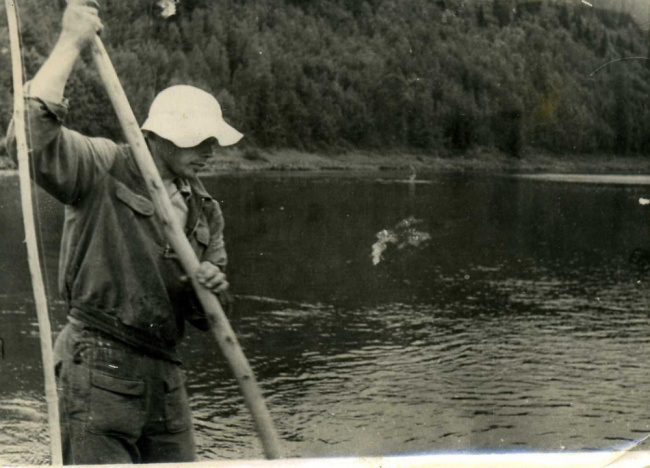
Mihail Sharavin in summer of 1958. Rafting downstream from from Mikhailovsky plant on the Ufa river
MP: What songs did you sing while hiking? For example, on that trip? Did you know the songs of Okudzhava, Vizbor, Gorodnitskiy? Did you sing criminals' songs? Were the new songs remembered, or were they rewritten, recorded in their diaries? The boys also recorded songs, did they have lists of these songs in the form of so-called songbooks?
MSh: And I don't remember the songs anymore. The girls were responsible for the songs. In each group there was always one girl who knew all the songs, and the rest only had to sing along.
MP: Have you personally kept journals on your hikes? Or they just kept records as the leader of the trek, in the group diary?
MSh: Tanya Andreeva was responsible for the diary on this trip. Even now, she found her notes and listed all the participants in the hike. I spoke with Tatyana by phone. I want to read her diary myself.
MP: Did you carry musical instruments such as guitars, mandolins, etc.? You can play the guitar yourself?
MSh: I can not play the guitar, unfortunately, I do not know how, and in winter hikes they rarely took a guitar.
MP: On winter hikes, they always took a stove. Or did they do without it? I do not understand such a moment: if people took the stove on a hike, then why did they practice cold nights? Why torture yourself?
MSh: We did have a stove, but if the temperature was above 20 degrees below zero, sometimes we did not install the stove.
MP: Do you keep in touch with any of your former classmates, hikers, and youth? With whom?
MSh: I keep in touch with Evgeniy Grigorievich Zinovyev. But I lsot contact with many of the participants in the treks.
MP: Which of the Dyatlov group members did you know personally? Did you go with any of the Dyatlov group hikers before on other treks? If so, with whom?
MSh: Personally, I did not go hiking with the Dyatlov group members. I was a lower class by experience and marching qualifications, I knew them only from my participation in the life of the hiking section, we met at the meetings of the club.
MP: Do you remember Yuri Doroshenko? When you found him at the cedar, did you recognize him?
MSh: Yes, I recognized Doroshenko.
MP: When you were in search, were there any "scary" stories told in the tent about the places where you were? You yourself were not creep out to be there, do you remember your feelings? Or perhaps because you were young you did not experience any attacks of fear there?
MSh: While participating in the search, I have not heard any scary stories about these places.
MP: Did the Mansi tell you anything about those places? Or did they not speak Russian?
MSh: At that time it was not necessary to communicate with Mansi either.
MP: When did you communicate?
MSh: I spoke with Mansi in 2009, when I went to the Dyatlov pass in Makarov's jeeps, and we stayed in Ust-Manya village, the last settlement along Lozva river before the tributary of Auspiya river. The jeep trip was organized by Kuntsevich to bring food and the operator from the mouth of Auspiya to the pass.
– 11 –
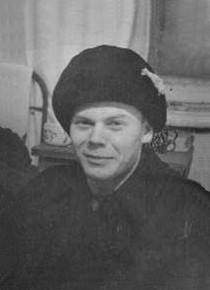
Mihail Sharavin. 1960s.
MP: Have you ever had any dream of the Dyatlov group, then or later, after a while? If so, please tell us what kind of dream it was?
MSh: I have not seen any dreams about the Dyatlov group.
MP: After that tragedy with the Dyatlov group, were students forbidden to go hiking in unknown places? Or were they just banning winter hiking? Or was it not forbidden, and you, students and young professionals, continued to go?
MSh: Hiking was not permitted in winter conditions. During a summer expedition in 1963 Yakimenko set up a memorial plaque on the "outlier" at the Dyatlov pass. For several years the Mansi were not allowed to graze deer there on their pastures.
MP: Have you personally experienced extreme situations while hiking? What kind? Tell me, please!
MSh: I had extreme situations, only on summer hikes. So, during the hike "in the footsteps of the stone woman" in the Konda river basin (a river in Western Siberia, the left tributary of the Irtysh), one two-man tent and part of the food burned down. We had to resort to "pasture" food and knowledge of local conditions.
MP: Do you have children, grandchildren? Do they share your interest in that tragedy?
MSh: Yes, I have two children and three grandchildren. They also care about my interests. But that is another story. My main passion is summer water trips. Once we went on a raft across the Sary-Chelek lake - 12 km. in the Tien Shan mountains.
MP: Oh, this is Kyrgyzstan. Western Tian Shan. I was there, too, on a hike, I was then 14 years old. Memories remained for life. But I haven't been to the Urals yet. Mihail Petrovich, thank you very much for the conversation. For taking the time to answer the questions! I think that despite your laconic answers, many researchers have seen something important between the lines. Thank you!
* * *
April - June 2012

